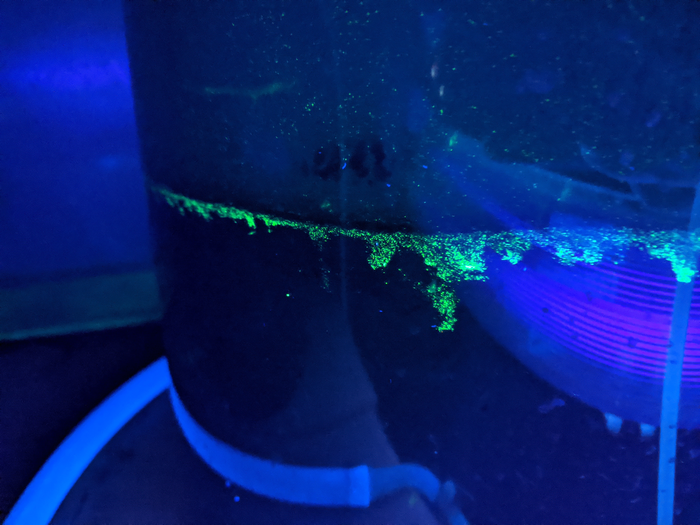Oceans have their own unique soundscape. Many marine organisms, for example, use sound for echolocation, navigation or communication with conspecifics. In recent decades, however, more and more sounds caused by human activities are permeating the waters. A study by the Alfred Wegener Institute now presents evidence that these sounds affect some invertebrates that live in and on the seafloor in ways that important functions they provide for their ecosystems may be impacted.

Credit: Alfred Wegener Institute / Sheng Wang
Oceans have their own unique soundscape. Many marine organisms, for example, use sound for echolocation, navigation or communication with conspecifics. In recent decades, however, more and more sounds caused by human activities are permeating the waters. A study by the Alfred Wegener Institute now presents evidence that these sounds affect some invertebrates that live in and on the seafloor in ways that important functions they provide for their ecosystems may be impacted.
Invertebrates such as crustaceans, mussels and worms are ecosystem engineers. They continually change the sediment they live in by burrowing, feeding, aerating and fertilizing with their excreta. These activities are critical to nutrient cycling in the ocean, allowing more carbon from dead organic material to be stored in the seafloor and nutrients to be recycled.
Rising temperatures, ocean acidification and pollutants are placing organisms in marine ecosystems under increasing stress. In recent decades, noises caused by human activities have also increasingly contributed to the problem, affecting the behavior, foraging or communication of marine animals. Sounds from blasting and resource extraction roar through the oceans along with the loud drone of cargo ships and recreational boats. A research team from the Alfred Wegener Institute, Helmholtz Centre for Polar and Marine Research (AWI) in Bremerhaven has now shown in a study published in the journal Environmental Pollution that these sounds stress not only marine mammals, but also invertebrates. “We investigated how crustaceans, mussels and worms on the seafloor respond to low-frequency noise and how frequently and intensively they are able to transform and break down sediment during noise exposure,” says Sheng V. Wang from the Department of Biosciences at AWI. Low-frequency noise is sound with frequencies between 10 and 500 hertz and in water, these sounds can be transmitted over many kilometers.
Despite the constant rise in noise pollution caused by human activities, little is known about how noise affects invertebrates on the seafloor. To help fill this research gap, AWI scientists studied in the laboratory how amphipods, lugworms, and Baltic clams are affected by sound waves with frequencies between 100 and 200 hertz using so-called “noise eggs”. “After six days, we could clearly see that all three species responded to the noise even though they belong to very different groups of animals that lack actual organs for hearing,” says AWI ecologist Dr. Jan Beermann. For example, the amphipods burrowed significantly less and not as deep into the sediment. No clear response was observed for the lugworms but they seemed to behave more inconsistently. Potential stress responses were noted for the Baltic clams which need to be further investigated. The researchers stress the urgent need for field research, however, as experimental setups under laboratory conditions do not encompass the full complexity of nature.
That additional man-made noise could inhibit seafloor invertebrates from cultivating and restructuring sediments may affect important functions of marine ecosystems, from nutrient supply to food availability for those higher up in the food web such as fish. “Things could get even ‘noisier’ on the seafloor due to human activities,” Beermann says. “We are just beginning to understand how exactly noise processes work here. Understanding this, however, is crucial for the sustainable use of our oceans,” which is why the team plans to conduct further research in this area. Experiments at other AWI sites such as Helgoland and Sylt are also to provide more detailed findings in a project together with European partner research institutions. The international platform JPI Oceans is funding the project.
Journal
Environmental Pollution
DOI
10.1016/j.envpol.2022.119899
Method of Research
Experimental study
Subject of Research
Animals
Article Title
Low-frequency noise pollution impairs burrowing activities of marine benthic invertebrates
Article Publication Date
1-Oct-2022




